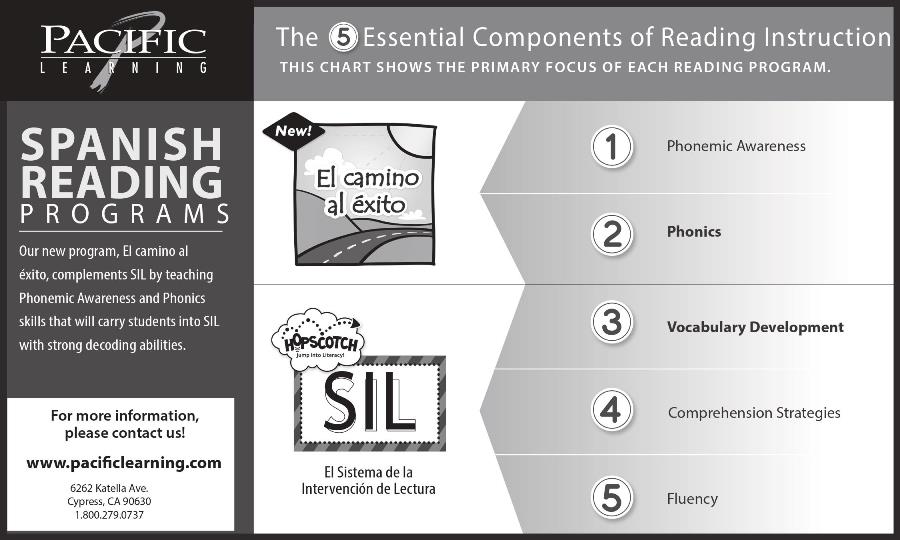Building Biliteracy
By Silvia Dorta-Duque de Reyes
 Dorta-Duque de Reyes compares and contrasts the skills needed to master reading and writing in Spanish and English and how transfer of what students know from their first language can aid in learning a second language.
Dorta-Duque de Reyes compares and contrasts the skills needed to master reading and writing in Spanish and English and how transfer of what students know from their first language can aid in learning a second language.
Of primary importance is the metacognitive skill of comprehension and awareness of whether a text is understood is necessary for readers of all languages, and must be taught in tandem with other reading skills. Research shows that “the process of learning to read and write is essentially the same across alphabetic languages such as English and Spanish, [and] effective instruction for multilingual learners must address the specific linguistic characteristics of the languages.”
Phonological and Phonemic Awareness is similar in both English and Spanish, so if Spanish speakers have already learned how phonemes work, they can transfer this knowledge to English. However one of the differences in Spanish is the use of the tilde. The author points out a second difference: in English, rhyming words help children learn patterns in the language, but in Spanish, it’s the syllable structure. Another similarity between the two languages is the relationships between sounds and spellings. However, there are some differences which should be taught rather than leaving the students to figure these out for themselves.
One major difference between the languages is that in Spanish, high frequency words are decodable, and are learned in the context of sentences so their use becomes automatic. In contrast, many high frequency words in English are not decodable and are usually taught individually. The author notes that the ability of MLs to read in English cannot be accomplished without the corresponding development of oral English skills.
The summary of her research is that “Foundational skills development should explicitly call attention to the similarities and differences between specific features of English and students’ home languages to advance the transfer of metacognition and metalinguistic knowledge, resulting in biliteracy.”
See the article for charts, teaching suggestions, and more specifics about the research.

 Celia Moses is the principal at Georgia Brown Elementary School, a magnet school with a dual immersion program.
Celia Moses is the principal at Georgia Brown Elementary School, a magnet school with a dual immersion program. Moses attributes the school’s success to a number of factors.
Moses attributes the school’s success to a number of factors.
